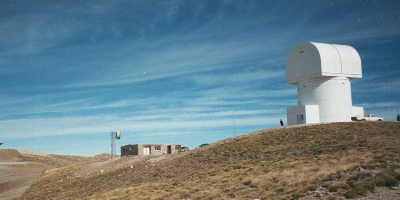
© https://www.greeknewsagenda.gr
Греція провела першу у Європі успішну демонстрацію лазерного зв’язку з космічним апаратом Psyche, який належить NASA. Передавання сигналу відбулося з обсерваторії Кріонері, розташованої на півострові Пелопоннес. Лазерний промінь було спрямовано до міжпланетного зонда, після чого відповідь прийняв телескоп "Арістархос", що працює на горі Хелмос. Обсерваторія Кріонері — одна з ключових наукових установ Греції в галузі астрономії, яку адмініструє Інститут астрофізики НАА (IAASARS). У її розпорядженні — один із найбільших телескопів країни, відомий як Корґіаленієвий телескоп, що був встановлений ще у 1975 році. У 2016 році цей інструмент пройшов модернізацію, яка дозволила брати участь у проєктах європейських та міжнародних агенцій, зокрема у програмі ESA з фіксації ударів метеороїдів по поверхні Місяця (NELIOTA). Нинішня демонстрація — частина програми Deep Space Optical Communications від NASA, яка покликана вивчити можливості високошвидкісної передачі даних у космосі за допомогою лазера. Обсерваторії Кріонері та Арістархос — єдині майданчики в Європі, залучені до цього технологічного експерименту. Наступний сеанс відбувся 4 серпня. Окрім лазерного передавача, Кріонері також бере участь у моніторингу об’єктів на низьких навколоземних орбітах, у дослідженнях міжзоряного середовища та входить до низки європейських астрономічних мереж. Цей науковий центр дедалі більше утверджується як важливий елемент європейської космічної інфраструктури.
Greece Becomes the First in Europe to Achieve Successful Laser Communication with Space
Greece has carried out the first successful demonstration of laser communication in Europe with NASA’s spacecraft Psyche. The signal was transmitted from the Kryoneri Observatory, located on the Peloponnese Peninsula. A laser beam was directed toward the interplanetary probe, and the return signal was received by the Aristarchos telescope, operating on Mount Helmos. The Kryoneri Observatory is one of Greece’s key scientific institutions in the field of astronomy and is administered by the Institute for Astronomy, Astrophysics, Space Applications and Remote Sensing (IAASARS). It houses one of the country’s largest telescopes—the Koryaleneios Telescope, which was installed in 1975. In 2016, this instrument underwent an upgrade that enabled participation in European and international projects, including ESA’s NELIOTA program for monitoring meteoroid impacts on the lunar surface. The current demonstration is part of NASA’s Deep Space Optical Communications program, which aims to explore high-speed data transmission in space using laser technology. The Kryoneri and Aristarchos observatories are the only sites in Europe involved in this cutting-edge technological experiment. The next communication session took place on August 4.
In addition to its role in laser transmission, the Kryoneri Observatory also contributes to the monitoring of low Earth orbit objects, research on the interstellar medium, and is a member of several European astronomical networks. This scientific center is increasingly establishing itself as a vital component of Europe’s space infrastructure.
960